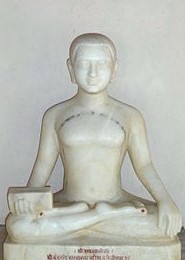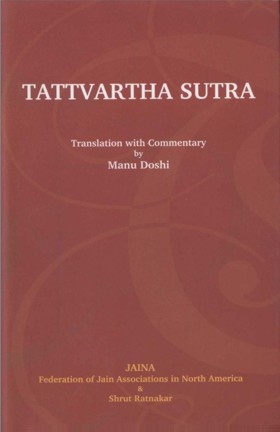06.06 Avratkashāyendriyakriyāh Panchchatuhpanch-panchvinshatisankhyah Poorvasya Bhedāh
Audio: Sanskrit: अव्रतकषायेन्द्रियक्रिया: पञ्चचतु:पञ्चपञ्चविंशतिसंख्या: पूर्वस्य भेदा: ।
Hindi: पूर्व में अर्थात् साम्परायिक कर्मास्रव के अव्रत, कषाय, इन्द्रिय और क्रिया रूप भेद है जिनकी संख्या क्रमशः पांच, चार, पांच और पच्चीस है।
06.07 Teevramandjnātājnātbhāwiryādhikaranvishes-hebhyastadvisheshah
Audio: Sanskrit: तीव्रमन्दज्ञाताज्ञातभाववीर्याsधिकरणवि शेषेभ्यस्तद्विशेष: ।
Hindi: तीव्रभाव, मन्दभाव, ज्ञातभाव, अज्ञातभाव, वीर्य और अधिकरण के भेद से उसकी (कर्मबन्ध की) विशेषता होती है।
06.06-07
English: There are four different ways the Sāmparāyik Āsrav takes place. Absence of restraints is the first. Non-violence, truth, non-stealing, celibacy and non-possession are the five major restraints. Non-observance thereof leads to involvement in violence, lies, stealing, sex-gratification and acquisition. All of these lead to Sāmparāyik Āsrav. Since the laymen cannot, observe those restraints fully, they are expected to observe the same in modified form called minor restraints. Moreover, they are supposed to observe three auxiliary restraints and four disciplinary restraints. Thus there are twelve restraints for them. Failure to observe those restraints results in Sāmparāyik Āsrav.
Kashāy is the second. It denotes the instincts that defile the mind. Basically, Rag and Dwesh (attachment and aversion) are two defiling instincts. If one likes something or some person, he develops attachment for that and craves to have the same continuously or repeatedly. That is termed as Rag. If, however, he dislikes the same, he resents it and tries to get away from that. That is termed as Dwesh. These two aspects take the form of anger, pride, deceit and greed. If an activity is undertaken with any of those instincts, that would lead to Sāmparāyik Āsrav.
Sense organ is the third. Skin, tongue, nose, eyes and ears are the five sense organs, with which one can experience the sense of touch, taste, odor, sight and sound. They are therefore the objects of the senses. The interaction of the mind with the sense objects is going to occur, whenever the sense organs come in contact with the respective objects. Ideally one should try to remain dispassionate during such- contacts. But the worldly soul happens to develop attachment or aversion for the objects, depending upon his likes or dislikes. For instance, if he comes across the pleasant flavor, he feels elated; if he comes across the stinking odor, he resents it. Such sense of attachment or aversion for any situation causes Sāmparāyik Asrav.
The fourth pertains to a few specific activities. Violence results in the most hurtful Asrav. Depriving a being of its Prān (vital life force) is violence. There are ten Prāns, viz. five sense organs, mind, speech, body, respiration and age span. This sutra mentions that there are 25 activities that tend to deprive Prān and hence result in Sāmparāyik Asrav. But the list given in the commentaries does not seem to be coherent, because that includes a few, e.g. activities in consonance with right perception, which do not lead to Sāmparāyik Asrav. Every activity leads to Asrav, but Sāmprāyik Asrav would occur only if it is undertaken with the sense of attachment or resentment. The activity undertaken with a detached mind leads only to Iryāpathik Asrav and Karma acquired thereby can be erased in no time.
Karma resulting from the above factors is not of the same intensity. Its intensity mainly depends upon four factors. The first is the degree of attachment, with which an activity is undertaken. If the degree is higher, the intensity of bondage is higher and if the degree is lower, the intensity is lower. The second relates to the condition in which something is done. Whether it is done knowingly or unknowingly makes a difference. When a person is knowingly involved in a wrong activity, the resulting bondage is of higher intensity, while getting unknowingly involved would result in bondage of lower intensity. The third is the vigor put in the activity. The stronger the vigor, the more intense is the bondage; and less the vigor, weaker is the bondage. The fourth is the means employed for the purpose. More violent or objectionable are the means, stronger would be the bondage; less violent are the means, weaker would be the bondage.
 Acharya Umaswati
Acharya Umaswati
